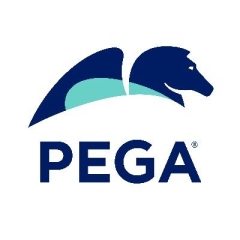What is our primary use case?
We are not resellers. We implement Pega Robotic Process Automation.
What is most valuable?
Definitely, we are satisfied. It's a pretty strong product.
They are leaders in the same industry.
What needs improvement?
As part of the digital transformation, most organizations are looking for the cloud option, and Pega's cloud presence is pretty much restricted to North America and Europe. There is no cloud presence in the Middle East, India, and other regions.
Financial customers in these regions are skeptical. They don't want to have their data outside of the geography for multiple reasons, mainly because of the government policies.
Pega should consider putting the focus on other regions such as India and the Middle East. They should also start to think about a data center that is hosted in that particular country.
It is not as easy, to implement bots in Pega with the features it carries as it is in UiPath. For example, implementing a chatbot or your email bot is not that straightforward in Pega.
When we consider OCR, the degree of accuracy is less with Pega when the data is structured or semi-structured. The accuracy of the OCR in UiPath or some other products is much high with structured and semi-structured data. The handwritten structured and semi-structured data recognition accuracy is much lower and is an area that definitely needs to improve.
For how long have I used the solution?
I manage the practice and have a team that has been working with Pega for 15 years.
They are not only working with Pega RPA but the entire platform, the entire suite of products that are offered such as RPA, BPM, and CRM.
What do I think about the stability of the solution?
Pega Robotic Process Automation is a stable product.
We had experienced performance issues at one point, but it had to do with the infrastructure that was procured by a particular customer. We are seeing larger implementations for financial customers.
Smaller customers have also had performance issues but again, it's because of the infrastructure.
What do I think about the scalability of the solution?
Our customers vary in size. We have small business customers to enterprise customers as well as corporate customers, and customers on a medium scale.
Which solution did I use previously and why did I switch?
Our experience is predominantly with ServiceNow and Pega.
We work with multiple products. Pega and Appian are two of the key products that we are working with. It is more in the RPA and BPM space.
We also have expertise in UiPath and Automation Anywhere. Our focus is on RPA, BPM with Pega, Appian, UiPath, and Automation Anywhere.
We also work with other products such as Salesforce, Microsoft Dynamics, and ServiceNow.
What we would recommend would depend on the customer. If it is a high scale enterprise customer who is looking for a core platform implementation, such as card dispute or claims modernization, they should go with Pega.
If a customer is looking for safe automation and easy implementation, they can use Pega, but we would recommend SalesForce because it is pretty straightforward and easy to implement.
With many customers, we see that they prefer Appian and UiPath to go along with having Pega and Salesforce already because Appian is a product that is straightforward and low-code. Anything that is implemented in Pega is a process that takes at least three to four months as a foundation. Any changes in Pega can take a lot of time, it is not low-code. Appian can be very easily implemented because of its model. If you have an operational implementation in finance operations, legal operations, HR operations, frequent changes, and for agility, we recommend Appian.
For customers who already have an RPA in place and already have Salesforce and they don't want a CRM but want to process data then we suggest UiPath. UiPath is pretty strong and pure RPA but it does not have a processed platform. If there are tactical solutions required we recommend UiPath.
These are the four main products we recommend to the customers depending on their current needs.
What's my experience with pricing, setup cost, and licensing?
I would like to see pricing for different geography sites. Pega is predominantly US-centric with its pricing. When we see customers in the Middle East, or the APAC region where they are is definitely looking for lower pricing, Pega still more costly because they are still in the US pricing model.
Pega is pretty costly. When you look at the competitors such as SalesForce, Newgen, and multiple other products, they have India-centric pricing, as well as pricing for the Middle East.
Which other solutions did I evaluate?
We have many customers who are interested in a comparison with many different products. We are evaluating solutions such as Pega RPA, Power Automate, and ServiceNow to create points of view of the differences between the products.
We also want a better understanding of the differences, as we don't have a lot of experience with Power Automate.
What other advice do I have?
To use Pega RPA, you have to be mature. If you are interested in RPA, I would still rank UiPath first. Pega would be the second recommendation and the third would be Appian.
Salesforce does not have a large RPA at this point. For pure RPA, there is no question that UiPath would be the suggested product.
Pega and Appian have to achieve a certain level of maturity. They are still a part of the product line and are still excellent products similar to OpenSpan, Jira, and also Appian. The integration is not as smooth as expected and it might take a year to get seamless integration.
If I were to rate Pega as a suite, I would rate it a nine out of ten. It has CRM, process implementations, customer experience, and has RPA.
I would rate Pega Robotic Process Automation a seven out of ten.
Which deployment model are you using for this solution?
On-premises
Disclosure: My company has a business relationship with this vendor other than being a customer. partner










